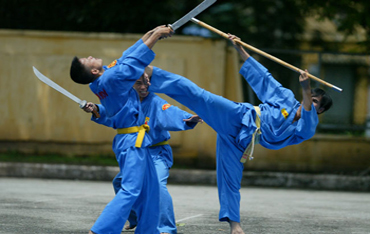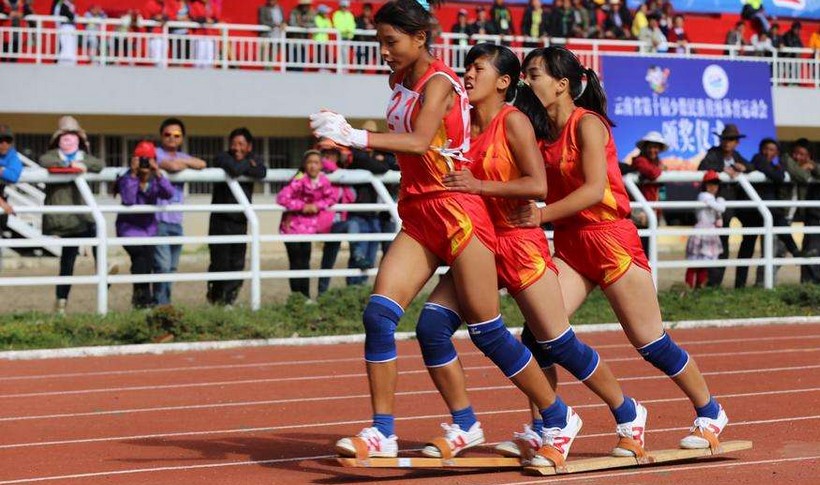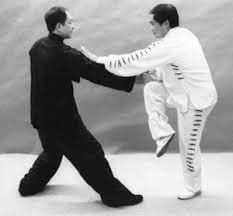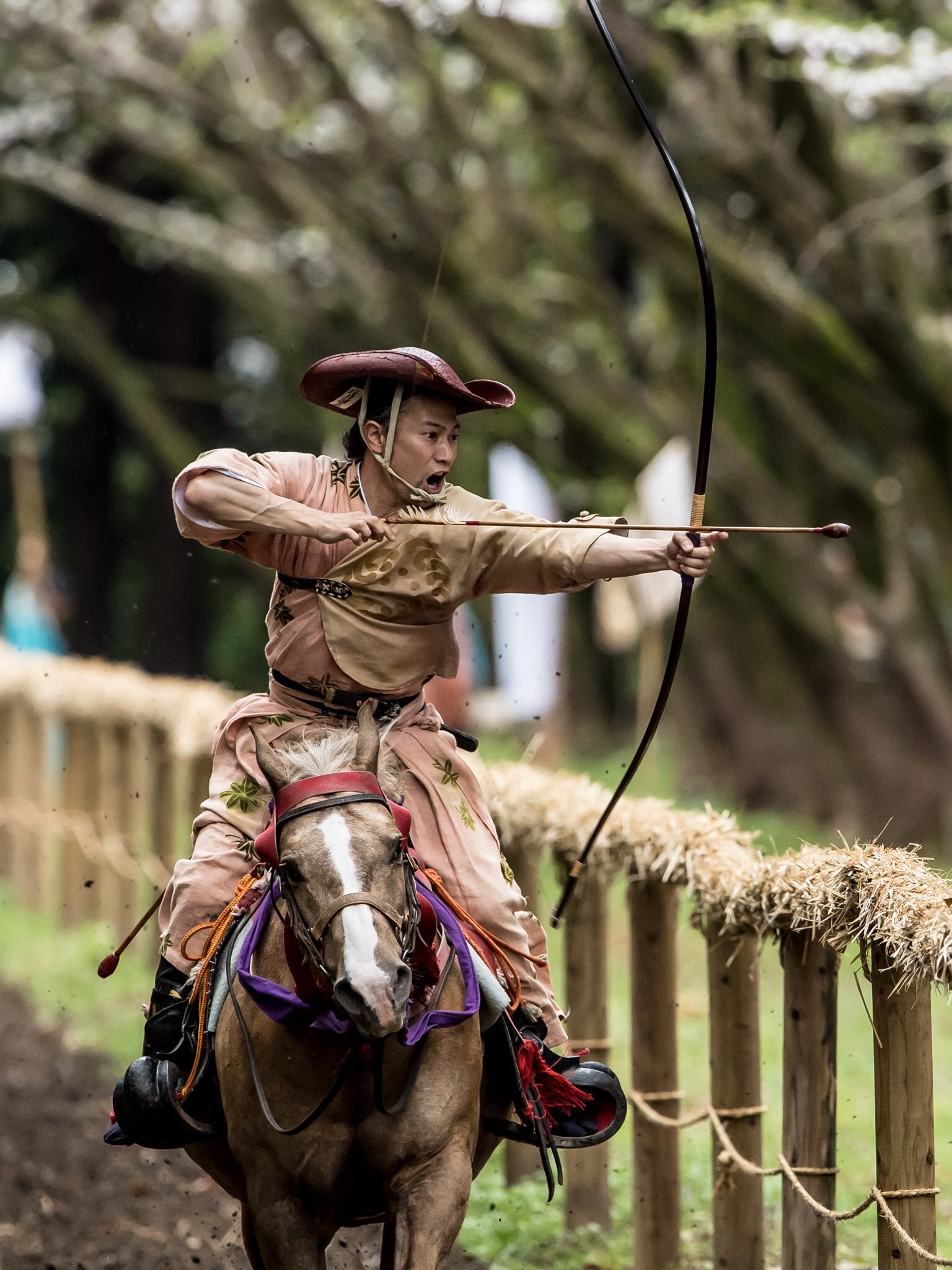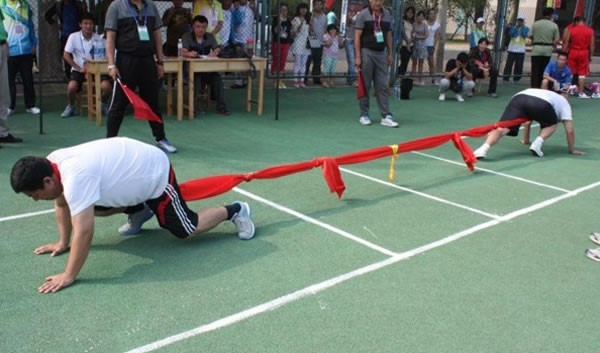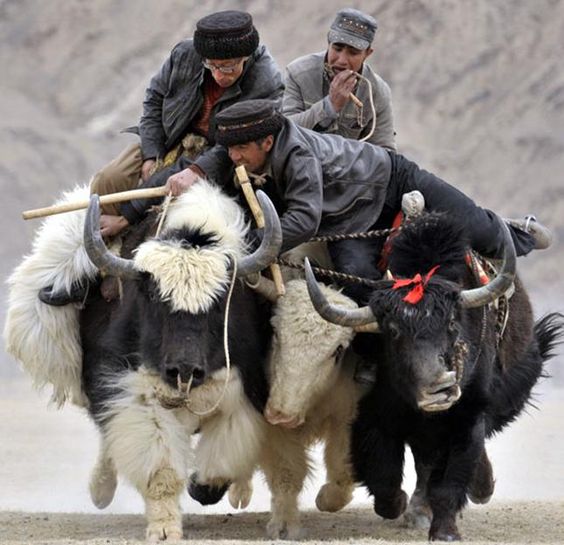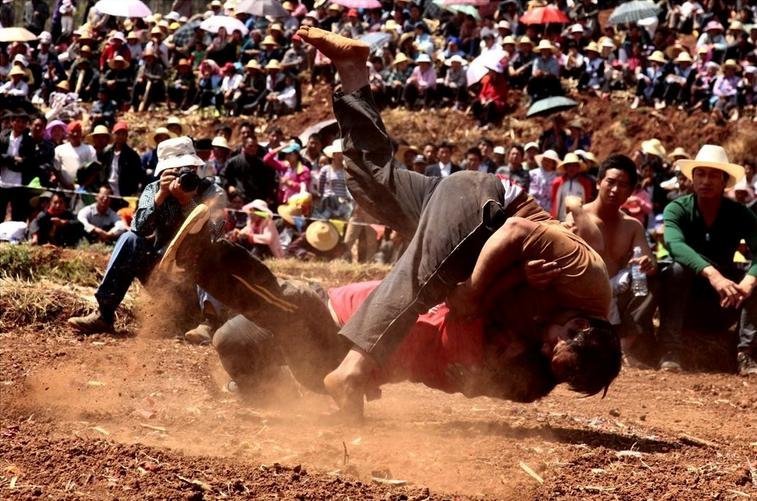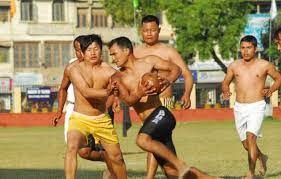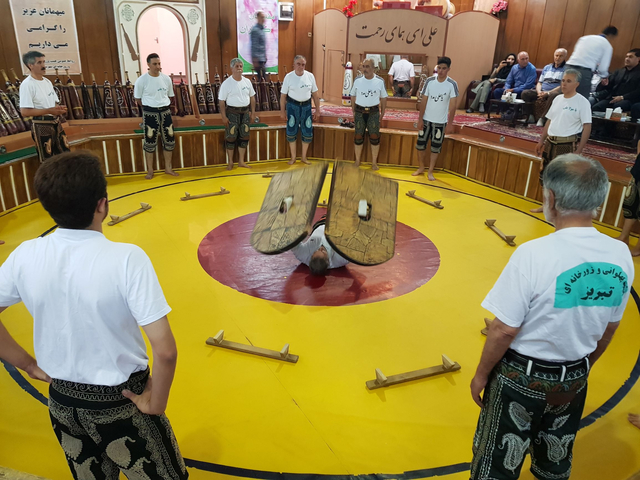- Name of sport (game): Vovinam
- Place of practice (continent, state, nation):
Vietnam
- History:
Vovinam is a genuine Vietnamese Martial Art (“Vo” means “Martial Arts”; “Vinam” stands for “Vietnam”).
By far Vovinam is Vietnam’s most popular traditional form of Martial Arts. The Martial Art of Vovinam was founded by Master Nguyen Loc in 1938. He researched other Martial Arts with the intention to combine specific aspects from each into one style that would be suitable to the physique of the Vietnamese people: thin, but fast, flexible and enduring.
Since 1964, the title “Viet Vo Dao” has been added, to become “Vovinam – Viet Vo Dao”. Viet Vo Dao stands for the philosophy on which Vietnamese Martial Arts leans, a/o the principle of Yin and Yang, or soft and hard techniques. In 1939, the first public demonstration of Vovinam took place in Ha Noi; subsequently clubs were established in all regions of northern and central Vietnam. Master Le Sang - successor of Master Nguyen Loc - organized a meeting with southern masters in Saigon with the view of spreading Vietnamese martial arts worldwide. In 1973 the “French Vovinam - Viet Vo Dao Federation” was established, gradually evolving into the “International Vovinam - Viet Vo Dao Federation”, which finally became the “Vietnamese Martial Arts World Federation”. - Description:
Along with martial arts philosophies and health maintenance techniques, Vovinam – Viet Vo Dao (VVVD) provides a system of martial arts techniques that encompasses various forms of self-defence that are very effective in real life combat. The goals of VVVD are to:
i) Preserve and develop the martial arts of Vietnam, applying “soft and hard core-development”;
ii) Research and innovate new martial arts’ techniques to improve VVVD technical resources;
iii) Train students on Strength, Techniques, and Philosophy to develop a solid body, strong endurance against obstacles and disease (Strength), self-defence and just causes (Techniques), and a rational mind, invincible will and gallant character (Philosophy). Students will be living in a self-disciplined and forgiving way and become model citizens, serving oneselves, one’s family, one’s state, and mankind.
Practitioners wear blue uniforms and earn belts just as in other traditional martial arts. A student begins with a light blue belt, same colour as the uniform. When VVVD student pass their first exam, the belts are changed into a dark blue colour, which stands for hope - the hope of being successful in learning VVVD. Upon positively completing the following 3 exams, yellow stripes are added to the blue belt. The 3rd yellow stripe is followed by the yellow belt: the student has reached instructor's level.
Higher levels include the red and white belts; the red stands for blood and fire, symbolizing a fighting spirit. Finally, white stands for infiniteness and bones, symbols of the depth of the spirit. The white belt designates the master to the absolute mastery of Vovinam - Viet Vo Dao.
It’s a bit ironic that Vovinam - Viet Vo Dao is getting popular in Europe, especially in France, since the founder developed this martial arts as a means to train Vietnamese youth against French colonialism. However, today the sport is also put into effect in the U.S., Canada, Australia, Belgium, Switzerland and other countries. - Current status:
Practiced
- Importance (for practitioners, communities etc.):
Nowadays, VVVD is very popular in Viet Nam, from big cities to small villages. It’s cheap to register for a class anywhere. Students can practice with and without weapons while in combat or in daily life. It includes training of the body as well as the mind - the fighting spirit, courage, tenacity, fairness, modesty, and tolerance. Above all, the morality involved in VVVD training and the way it teaches how to apply techniques shape the students’ character.
- Contacts:
World Vovinam Federation - WVVF - https://www.facebook.com/WorldVovinamFederation/

- Gallery:
- Name of sport (game): Wooden shoes race
- Name in native language: 板鞋竞速(Ban Xie Jing Su)
- Place of practice (continent, state, nation):
Guangxi, China
- History:
This sport was invented in 1500s, during Ming Dynasty. It was originally used to train soldiers to improve their cooperation in Guangxi. Then it becomes popular around other parts of China as an entertainment activity.
- Description:
This sport usually covers several pairs of wooden shoes/long ski boards. Each pair of wooden shoes is 100 cm in length, 9 cm in width and 3 cm in thickness. It has velcro or nylon tapes for fastening athletes’ feet on it.
Wooden Shoe Racing is usually played in three forms: speed contest / Relay Race/obstacle race
Rules:
(For Speed Contest)
1. Speed Contest is usually played in a stadium. It uses normal athletic track.
2. Three players form a team and get ready for race.
3. On “Ready, set, go” mark, athletes must compete a distance of racing(60m or 100m)as fast as possible.
4. The first team crossing finishing line wins.
5. If the team falls down or their feet leave wooden shoes during the race, they must stop and make their feet attach to nylon tapes on wooden shoes again. Only then could they complete the rest of the race.
6. They must keep in their own race track during the race.
7. False start, running on other teams’ track or someone’s feet without keeping touching wooden shoes during race will cause an invalid result.(For Relay Race)
Rules similar to speed race, but distance of race is longer(200 m) and each team usually has two or groups for relay race.(For obstacle race)
Rules similar to speed race, but more interesting because players have to finish several tasks while they are running on wooden shoes. For example, bypassing cones or stepping over balloons, etc. - Current status:
Practiced sport. It is also a formal event of Traditional Sports Games For Ethnic Groups in China.
- Importance (for practitioners, communities etc.):
It improves cooperation, agility and determination of players.
- Gallery:
- Contacts:
International Wushu Federation
Web: www.iwuf.org Email:This email address is being protected from spambots. You need JavaScript enabled to view it. Lausanne | Tel: +41 21 312 2583 | Fax: +41 21 312 2587
Avenue de Rhodanie 58, 1007 Lausanne, SwitzerlandBeijing | Tel: +86 10 87774492 | Fax: +86 10 5962 0989
9 Huaweili, Chaoyang District, 100021 Beijing, China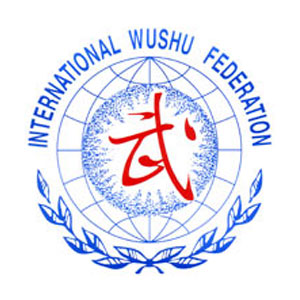
- Gallery:
- Name of sport (game): Xingyiquan
- Name in native language: 形意拳
- Place of practice (continent, state, nation):
China
- History:
Xingyiquan was created in imitation of the fighting techniques and spirit of twelve animals. One of the documents which are available to us contains a section which explains what Xingyiquan is. We would like to translate it here and make some comments. Hopefully this will give you a clear concept of Xingyiquan.
The history of the martial arts before the Qing Dynasty (1644 a.d.) is very vague because almost all of the Chinese martial artists were conservative and the styles were passed down secretly. It is the same with Xingyiquan. According to most of the available documents, the origin of Xingyiquan should probably be dated at least as far back as the Liang Dynasty (502-557 a.d.) at the Shaolin Temple. This is because, at this time, the Shaolin Temple was already imitating the movements and fighting spirit of five animals in their martial arts training. Later, during the Southern Song Dynasty (1127-1280 a.d.), it is believed that Zhang, San-Feng combined the concepts of Shaolin martial arts with his own understanding of Qi and created Taijiquan. In fact, many Xingyiquan practitioners believed that Xingyiquan originated at Wudang Mountain, the same as Taijiquan did.
Since the late Southern Song Dynasty, when the soldiers in Marshal Yue’s army were trained in Xingyiquan, the art has become very popular, and Marshal Yue is frequently credited with creating the art. However, since his martial arts originally came from the Shaolin Temple, many people trace Xingyiquan’s ancestry back to the Shaolin Temple.
Between the Song and the late Ming Dynasties, the history of Xingyiquan is again unclear. During the Qing Dynasty (1644-1912 a.d.), Xingyiquan became more popular because the mind of the Chinese people was more open, due in part to the more frequent contacts with Western culture. Consequently, its history during this period is better known.
Generally, it is believed that a martial artist named Ji, Ji-Ke(nicknamed Long-Feng) of Pu Zhou, who traveled and visited the well known masters in the mountains of Sichuan and Shanxi Provinces, obtained on Zhong Nan Mountain a secret book on Xingyiquan written by Marshal Yue. After he studied the art for some time, he passed it down to his disciple Cao, Ji-Wu, who in turn passed it down to Ji, Shou and Ma, Xue-Li. Ji, Shou later published Yue’s book and popularized the art even more.
There have been many famous Xingyiquan masters since then. From then (Qing Tong Zhi, 1862-1875 a.d.) until now, countless people have learned Xingyiquan. Here we can only name some of the best-known ones. There were Dai, Long-Bang and his brother Dai, Ling-Bang who learned from Ma, Xue-Li during the Qing Xian Feng period(1851-1862 a.d.). Then they passed the art down to Li, Luo-Neng. Li, Luo-Neng then passed it down to many of his students, the better-known ones being Song, Shi-Rong, Che, Yong-Hong, Liu, Qi-Lan, Guo, Yun-Shen, and Bo, Xi-Yuan. Among these five, Liu, Qi-Lan had many students such as his three sons, Liu, Jin-Tang, Liu, Dian-Chen, Liu, Rong-Tang, and students Li, Cun-Yi, Zhou, Ming-Tai, Zhang, Zhan-Kui, Zhao, Zhen-Biao, and Geng, Ji-Shan. Also, Guo, Yun-Shen passed down his arts to Liu, Yong-Qi, Li, Kui-Yuan, and Qian, Yan-Tang.
In the beginning of this century, when the Qing emperor fell and the republic was organized by Dr. Sun, Yat-Sen, the entire country entered a new era. As the nation gradually became more open-minded, the traditional secrets were more easily revealed to the public, and an enormous number of people took up Xingyiquan. For example, Li, Cun-Yi and Zhang, Zhan-Kui had a great many students, among them Li, Yun-Shan and Shang, Yun-Xiang. Shang, Yun-Xiang’s student Jin, Yun-Ting was a well known Xingyiquan promoter fifty years ago. Also, Li, Kui-Yuan’s student Sun, Lu-Tang was well-known as a Taijiquan, Xingyiquan, and Baguazhang master. Finally, Zheng, Huai-Xian learned from Sun, Lu-Tang and passed his arts to master Liang, Shou-Yu.
You can see that a chart of the generations of Xingyiquan masters would be very complicated. Keep in mind, also, that there are probably at least ten times as many people who also reached a high level of mastery, but are not well-known because they did not share their knowledge so generously with the public. This implies that the people mentioned were not necessarily the best Xingyiquan players of their time. A similar thing happened with Taijiquan. A great many people throughout the world know about Yang, Cheng-Fu and his style of Taijiquan, but fewer people know about his uncles and the generation older than his uncles whose techniques were said to be much higher than his.
Because the origin of Xingyiquan is so unclear, many martial artists would therefore credit Marshal Yue, Fei with its creation. There are several reasons for this. First, Marshal Yue, Fei was a Chinese hero and is respected by all Chinese. Second, Yue, Fei’s martial arts came from the Shaolin Temple, which is considered the origin of both the internal and external styles. Third, Yue, Fei’s ten theses on Xingyiquan demonstrate a very deep understanding of the art. Even though he may not be the creator, his theses have shown us the correct way to master the art. Fourth, Yue, Fei compiled and organized the Xingyiquan style into an effective martial system to train his soldiers. He is believed to be the first person to reveal the secrets of Xingyiquan to the public. Fifth, Yue, Fei was not only an expert in martial arts, he was also well known as a Qigong master. He is credited with creating the Eight Pieces of Brocade (Ba Duan Jin), which is a medical Qigong set for health, and the external martial style Yue Jia Ying Zhua (Yue Family’s Eagle Claw). It is believed that only a person who was an expert in both Chinese medicine and martial arts would be able to combine them to create these styles.by Dr. Yang, Jwing-Ming
Source: https://ymaa.com/articles/xingyiquan-part-1 - Description:
Styles of Xing Yi Quan
There are many styles of Xing Yi, and although training is similar in all styles, different styles have somewhat different emphasis and training methods.
There are considered to be three main branches of Xing Yi:
Shanxi Xing Yi
Hebei Xing Yi
Henan Xing Yi
To generalize the differences between the three, the Shanxi branch emphasizes a soft, flexible, hidden power (soft on the outside and hard inside), while Hebei styles are more direct and powerful (hard outside and soft inside). The Henan branch is sometimes called the “Muslim Style,” because it was handed down within the China’s Muslim community.
The style of Xing Yi passed on by Master Li Gui Chang to Tom Bisio and Internal Arts International comes from the Shanxi branch of Xing Yi Quan.Xing Yi Quan training is direct, simple and natural. The essence of the training method is contained in three inter-related practices:
Trinity Posture (San Ti Shi)
San Ti Shi is a form of standing meditation in which one senses deeply inside the body in order to cultivate an inner awareness of the mind and body, and gain insight into the subtle internal movements and transformations that are unfolding internally. A byproduct of this process is the development of inner stability, power, agility, and unification of body, mind and spirit.Four Method Breathing (Tu Na Si Ba)
Tu Na Si Ba is a unique blend of several classic Nei Gong methods that completely changes one’s internal body awareness. Tu Na Si Ba efficiently combines the essence of Southern (Nan) Shaolin Nei Gong, Marrow Washing Nei Gong (Xi Sui Jing), Breath Regulation (Tu Na) and the famous Muscle Tendon Change (Yi Jin Jing). Practice of Tu Na Si Ba builds fascial strength and integrative power, and strengthens the tendons, bones and joints. Tu Na Si Ba restores the body’s embryonic internal movement (true internal movement) that is often dormant in adultsSplitting Fist (Pi Quan)
The practice of Pi Quan is integral to Xing Yi Quan. Pi Quan is the root of all other movements and forms. Pi Quan acts as a counterpoint to San Ti Shi by training inner stillness within external movement, while carving away the non-essential to discover the inner core of one’s natural movement. Pi Quan develops integrated whole body power, linked to inner will and focused intention. Together Pi Quan and Tu Na Si Ba stimulate the Micro-Cosmic and Macro-Cosmic Orbits. These internal circulations of Qi, breath, essence and spirit actualize inner transformation and transcendence.Advanced Training Methods in Xing Yi Quan
Advanced Xing Yi training includes the Twelve Animal Fists, Xing Yi Quan Linking Forms, Xing Yi Spear (Qiang), Straight Sword (Jian), the Short Stick (Bian Gan), and many partner exercises.Twelve Animals
Dragon (Long Xing), Tiger (Hu Xing), Monkey (Hou Xing), Horse (Ma Xing), Alligator (Water Lizard – Tuo Xing), Rooster (Ji Xing), Swallow (Yan Xing), Sparrow Hawk (Yao Xing), Snake (She Xing). Tai Bird (Tai Xing), Eagle-Bear (Ying Xiong Xing), Bear (Xiong Xing). Each of the Twelve Animals expresses a different internal and external body configuration that are variations (or extensions) of Pi Quan and the Five Element Fists.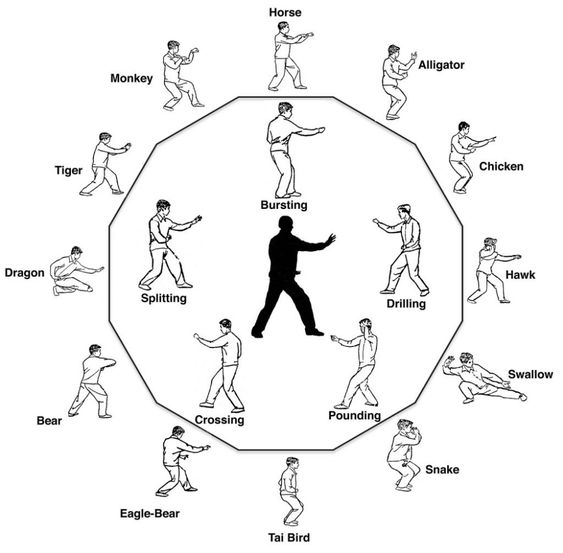
Xing Yi weapons include Xing Yi Spear (Qiang), Straight Sword (Jian), the Short Stick (Bian Gan).
The Sword and Spear help develop body awareness and internal connection. Both weapons train the Qi, intention and spirit, all of which must be extended out to the tip of the weapon. The spear and sword are also Daoist tools that cut through delusion and pierce through illusion. Training with these former battlefield weapons enhances internal awareness and refines internal movement.
The Short Stick (or cane or umbrella) offers a modern self-defense weapon.
Source: https://www.internalartsinternational.com/xing-yi-quan/ - Current status:
Practiced

- Contacts:
Chinese Internal Arts Association
Web: http://www.ciaa.org.uk/
Postal address:
Eva Koskuba
Lambs Farmhouse
Basingstoke Road
Swallowfield
Berks RG7 1PY
U.K.
telephone: 07905 514989 (+44 7905 514989)
e-mail:This email address is being protected from spambots. You need JavaScript enabled to view it. 
American Xingyiquan Baguazhang Institute
Web: https://www.xingyi-bagua.com/xingyi
Fb: https://www.facebook.com/AmericanXingyiBaguaAssociation/
Instagram: https://www.instagram.com/xingyibagua/?hl=en
Youtube: https://www.youtube.com/channel/UCAYH5FCdn6gpMik69O4GM3A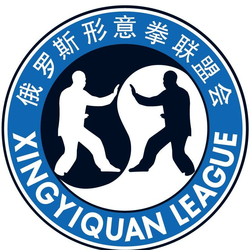
Xingyiquan League
E-mail:This email address is being protected from spambots. You need JavaScript enabled to view it.
Fb: https://www.facebook.com/people/Xingyiquan-League - Sources of information :
Books:
Li Jianqiu, The Art of Xingyiquan, 2023
Li Wen-bin, Shang Yun-xiang Style Xingyiquan, The Foundations And Subtleties Of Xingyiquan Training, North Atlantic Books, 2014
Shou-Yu Linag, Jwing-Ming Yang, Xingyiquan: Theory, Applications, Fighting Tactics and Spirit, YMAA Publication Center, 2002
Andrea Falk,Tianji Li,Deyin Li, Li Tianji's The Skill of Xingyiquan, Lulu press, 2021
Di Guoyong, On Xingyiquan: Hard Cover, Tgl Books, 2021
C S Tang, The Mysterious Power of Xingyi Quan: A Complete Guide to History, Weapons and Fighting Skills Paperback, Singing Dragon; Illustrated edition, 2013
Jwing-Ming Yang, XINGYI QUAN, Editorial Sirio; First Edition, 2004
Tom Bisio, Xing Yi Quan, Outskirts Press, 2019
Gong Zhon Franklin Fick, Authentic Xing Yi Quan, 2012
Lutang Sun, The Study of Xing Yi Quan, 2014
Jin Yunting, The Xingyi Boxing Manual, 2015
Lu Shengli, Combat Techniques of Taiji, Xingyi, and Bagua, Principles and Practices of Internal Martial Arts, 2006
Articles:
https://www.internalartsinternational.com/xing-yi-quan/
https://ymaa.com/articles/xingyiquan-part-1
https://what-when-how.com/martial-arts/xingyiquan-hsing-i-chuan-martial-arts/
https://sicknesskungfu.com/xingyiquan-theory/
https://www.yiquan.pl/xingyiquan/
https://www.martialtribes.com/mma-xin-yi2/
https://www.wudangdanpai.com/xingyiquan
https://www.usadojo.com/xingyiquan/
https://yamalaguna.com/portfolio-items/xing-yi-quan/
https://www.freedommartialart.com/japanese-arts/kung-fu/xing-yi-quan.html
https://www.wayofleastresistance.net/2010/02/cracking-xingyi-code.html
https://www.weihaikungfuacademy.com/blog/xingyiquan
https://www.ctmaa.com/content/Xing-Yi-Xingyi-Hsing-I-Hsing-Yi-Chicago-Internal-martial-arts-kung-fu/index.html
https://ensomartialarts.com/china/xing-yi-quan-history/Photos:
https://lotusneigong.com/project_category/xingyiquan/Videos:
https://www.youtube.com/watch?v=uP5OEjYVzKQ
https://www.youtube.com/watch?v=4ulJ1hBuIbk&t=1s
https://www.youtube.com/watch?v=HT4Yheu8okQ
https://www.youtube.com/watch?v=DMRsH-bbbBM
https://www.youtube.com/watch?v=resUgbo87qQ
https://www.youtube.com/watch?v=J7TR4WM6CuM
https://www.youtube.com/watch?v=lLpcKcZIU2c&t=1s
https://www.youtube.com/watch?v=1EiX4llQ5PU
https://www.youtube.com/watch?v=SwDgruwc8v0
https://www.youtube.com/watch?v=JQUofsZCTZA&t=1s
https://www.youtube.com/watch?v=POe3jqVvPZc
https://www.youtube.com/watch?v=2vHwuzbgMFA
https://www.youtube.com/watch?v=6-g2H8RIVC4
https://www.youtube.com/watch?v=StY5UOJzjSQ
https://www.youtube.com/watch?app=desktop&v=rElp16J6Si4The information contained in the article comes from the following sources:
https://ymaa.com/articles/xingyiquan-part-1
https://www.internalartsinternational.com/xing-yi-quan/Source of photos used in this article and gallery:
https://ymaa.com/articles/xingyiquan-part-1
https://what-when-how.com/martial-arts/xingyiquan-hsing-i-chuan-martial-arts/
https://www.yiquan.pl/xingyiquan/
https://www.martialtribes.com/mma-xin-yi2/
https://www.wudangdanpai.com/xingyiquan
https://www.weihaikungfuacademy.com/blog/xingyiquan
https://ensomartialarts.com/china/xing-yi-quan-history/ - Gallery:
- Name of sport (game): Yabusame
- Name in native language: 流鏑馬 (Japanese)
- Place of practice (continent, state, nation):
This sport discipline is practiced in Japan. Performances of it are occasionally shown in other countries.
- History:
The roots of this sport date back to prehistory. It was established in Jōmon era. According to historians, year 12,000 BCE was the beginning and year 300 BCE was the ending of the era. The shape of the bow, that is used nowadays, was created during Yayoi era (300 BCE – 300 CE).
Until the 4th century archers were moving on foot, then they started horseback riding. After few hundred years later samurais, who were at most 10% of Japanese population, began dueling in a way similar to today’s Yabusame – each of the samurai rode closer to the other rider in order to shoot him with at least three arrows.
At the end of the 12th century in Japan’s history began another important period for Yabusame. Kamakura era, apart from socio-political transformations closely related to the emerging feudalism and reducing emperor’s role to ceremonial functions, also began the tradition of demonstrating archery techniques on a horse before the government. It was also an exercise preparing for a possible war.
Later, this sport discipline lost its popularity. It experienced a big reform only in the year 1724. It was then that Ogasawara Heibei Tsuneharu led by Shogun Yoshimuna developed a new Yabusame style: combining the traditions and textbooks of both schools of this sport. Both schools were created in the 9th and 12th centuries.
What is interesting, this discipline was also used for ritual purposes. It was demonstrated during prayers for healing, repelling evil, or the birth of children.
After the abdication of the last ruler of the Tokugawa Shogunate (1867) and the restoration of the Empire, the sport lost its popularity once more. It was only after the Second World War that Yabusame returned and now is an essential element of the Japanese tradition. - Description:
Archers are dressed in traditional costumes from the Kamakura period – a time during which this sport was actually created. The sport begins with a ritual prayer. The leader of the game places an arrow on the altar in order to drive away evil spirits, after short introductory ceremonies. He sacrifices that arrow to the gods. Later, one of the players stands in front of the main place of the celebration. He says a prayer intended to bring peace and abundant crops to the country.
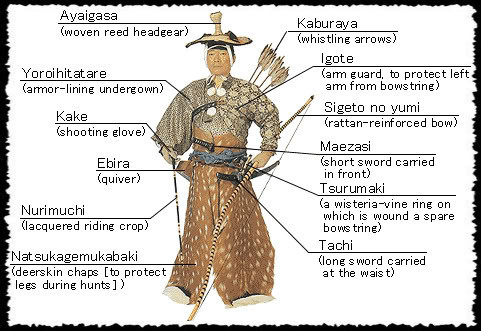
Next, on the altar an olive branch is offered, and the leader of prayer gives one of the archers a folded arrow, which will be used again at the next ceremony. The speech ends with a few hits on the gong. After leaving the temple, players go on the game field.
A further prayer takes place before reaching the destination. The archer, being already on his horse, tightens the bowstring, directing the arrow towards the sky and then towards the ground, which reminds a deep bow. These activities are performed for peace and prosperity.
The procession, leaded by the person with the olive branch, passes along the track of the game, which is about 218 meters long (2 Japanese chōs). A fence is placed on both sides of it. On the left, about 5 meters from it, at a height of 2 meters, 3 square targets with a length of 35-50 centimeters, spaced apart at equal distances, are installed. These distances, however, can change, because they are dependent on Yabusame schools and rules applied in a given region.
First, there are several test runs, during which no shields are shot. Then the main game begins. Two people standing at the beginning and the end of the track give the signal to start by waving fans. While horses’ gallop, riders have to hit the targets. If they succeed, the player sitting at the target raises a white fan.
Over the time, the targets were changed to wheels with a diameter of 10 centimeters. Inside there is confetti that shoots from it after being hit by an arrow. Some Yabusame schools, however, do not have this kind of targets.
Here and there after shooting all three shields archers receive a white robe, which they put on their shoulders.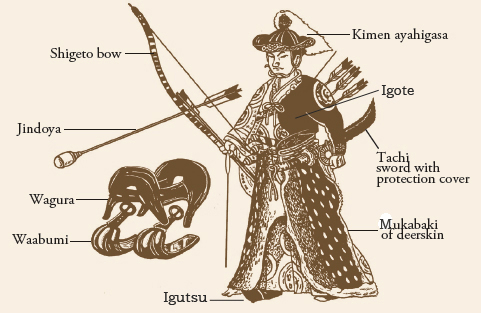
- Current status:
Yabusame is not often practiced. Mostly only on chosen, festive days, as well as during visits of heads of state, or other high-ranking officials from other countries.
Yabusame performances take place in various districts of Japan on different days. However, in many places in this country this discipline is practiced on September 15, on Shintō festival Rei-sai, during which there is pleading for further prosperity from the gods. Rei-sai is one of the three most important celebrations throughout the year.
In addition, some regions demonstrate this discipline on Sunday, which is near April 15, May 4, May 5, August 1, September 9, November 3, and several other days.
There are no regular games. The position of the archer in Yabusame is a highly honorable matter. Although only men practiced this sport, for some time also women become archers – they compete with each other, presenting this discipline. - Contacts:
Ogasawara-ryū – school founded in 1187.
http://www.ogasawara-ryu.gr.jp/ (Japanese)
http://www.ogasawara-ryu.gr.jp/english (English)The Japan Equestrian Archery Association
http://yabusame.or.jp/ (Japanese)
http://yabusame.or.jp/english/ (English)20-43 Onarimachi, Kamakura, Kanagawa-ken
Japan, 248-0012 - Sources of information :
Articles:
https://pl.wikipedia.org/wiki/J%C5%8Dmon
https://en.wikipedia.org/wiki/Yabusame
https://doyouknowjapan.com/yabusame/
https://www.youtube.com/watch?v=ve0KVtx_u74Video:
https://www.youtube.com/watch?v=ve0KVtx_u74 – report from men’s games.
https://www.youtube.com/watch?v=DDDvSRCVq_g – report from women’s games.Source of photos used in this article and gallery:
https://twitter.com/hyuga_mt_419/status/718408248877920256/photo/2
http://yabusame.or.jp/english/
https://amoderngirl.wordpress.com/2012/12/06/yabusame-the-japanese-art-of-mounted-archery/
https://tokyobling.wordpress.com/2013/11/28/yabusame-horse-archery-at-meiji-shrine/
https://www.globetrotting.com.au/yabusame-japanese-horseback-archery/
https://www.aa.com.tr/en/culture-and-art/ethnosport-cultural-festival-features-japan-s-yabusame/1141395
https://www.ana.co.jp/en/jp/japan-travel-planner/aomori/0000009.html
https://pl.pinterest.com/126bydziku/yabusame/
https://uncoveringjapan.com/2013/11/22/crash-course-yabusame/ - Gallery:
- Documents:
 Morgaine_Theresa_Wood_Mounted_Archery_in_Japan_Yabusame_and_the_Modern_Setting.pdf
Morgaine_Theresa_Wood_Mounted_Archery_in_Japan_Yabusame_and_the_Modern_Setting.pdf
- Name of sport (game): Yajia
- Name in native language: 押加 – from Tibetan – „Pulling like an elephant”
- Place of practice (continent, state, nation):
Tibet Autonomous Region,China
- History:
More than 1000 years.
- Description:
Yajia (Tibetan-style Tug-of-war) is a traditional game and sport of Tibet. It originated from Tibetan traditional spirit - to be more specific from Tibetan belief that elephant is a holy messenger from God. Therefore, Tibetans imitate actions of elephants which they think may bring them good luck.
Rules:
1) Everybody can take a part in the event. Just before the match, contestants have to weigh themselves in order to compete with opponents of the same weight category. Only then match can be fair.
2) If it is held in an open space, a court with 9x2m is assembled. Two finishing lines are drawn 2.4 metres apart with the point zero in the middle of the court.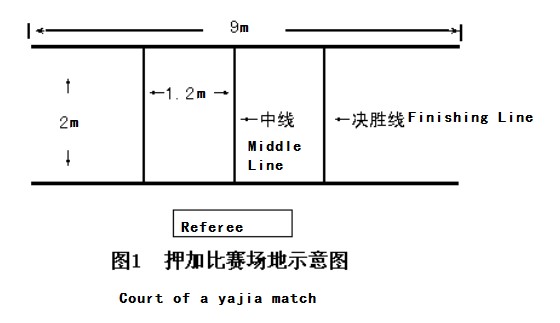
3) A 6 metre-long ribbon is attached to the necks of two contestants, then put the way it could get through between their legs and its central mark (usually yellow ribbon or knot) could be positioned right above the point zero.
4) The target for both contestants is to drag the yellow ribbon across the finishing line. The first to do so wins a set. A match usually consists of three sets and whoever wins two of them wins the match.
5) If neither of contestants can drag the ribbon across the line in 90 seconds, the set is considered to be a draw. In such a situation contestants take a 2-minute break and try again.
6) If after 3 sets contestants are in draw situation, another set is added to the match. Time limit of the extra set is 60 seconds. During an extra set:
a) Contestants can win having the yellow ribbon dragged over the finish line
b) Wins the contestant who dragged the yellow ribbon closer to his finish line (if neither of them made it across)
7)Participants cannot pull the ribbon with their hands and have to stay in a kneeling position. Otherwise they can be penalized or even disqualified. - Current status:
Practiced sport
- Importance (for practitioners, communities etc.):
It is an events of Minority Traditional Sport Games in China.
Beside Tibetans it is common for other minorities to take a part in Yajia. - Contacts:
Beijing Association For Traditional Sports of Nationalities
Address:He Ping Li Xi Jie,Dongcheng District,Beijing,China 100010
Tel:+86 10 64281673
Email:This email address is being protected from spambots. You need JavaScript enabled to view it.
Website:www.bjsmztx.com - Gallery:
- Name of sport (game): Yak riding
- Place of practice (continent, state, nation):
Central Asia
- Sources of information :
Articles:
https://www.fao.org/3/ad347e/ad347e0t.htmSource of photos used in this article and gallery:
https://caravanistan.com/transport/yak-riding/ - Gallery:
- Name of sport (game): yi wrestling
- Place of practice (continent, state, nation):
Province Yunnan, China
- Sources of information :
Source of photos used in this article and gallery:
https://www.synotrip.com/photos/yunnan-province-china/timmytao/wrestling-yi-people - Gallery:
- Name of sport (game): Yubee Lakpee
- Place of practice (continent, state, nation):
Manipur, India
- Description:
Yubee Lakpee is a popular outdoor game in Manipur, played only by men. It is akin to rugby, and requires a great deal of vigorous body play and stamina. Yubee in Manipuri means coconut, and lakpee means snatching. This is a seven - a - side game and is played on a field that is 45.72 by 18.29m in area. The game starts when a coconut, duly anointed, is thrown into play, from one end of the field. The coconut is greased, and each player tries to catch it. Each player exhibits his strength and agility, in both gathering the coconut and holding onto it. The game demands wrestling ability, speed, great reflexes and a sharp mind. Some scholars choose to view the game in a religious light, since it was played on the grounds of the Bijoy Govinda Temple on pichakari day, at the home of King Ananta Shayee, by persons acting as gods and demons. The game was celebrated annually on this day, re - enacting the scene from Hindu mythology involving the snatching of the pot of nectar, after the churning of the sea.
The number of players may vary, but usually the maximum number of players does not exceed 24. Each player performs as an individual. After oiling his body, each player wears the ningri or waist belt, similar to the one worn in the game of Mukna.
The coconut is placed at the centre of the field, and on a signal, the players race towards it. The referee begins the game with a loud call - ' s wa ', occasionally he begins it by throwing the coconut into play, in centre field. The coconut is held chest - high by the player in possession, and players are not allowed to kick it.
The team, the players of which succeed in carrying the coconut into the box area ( a rectangular space 4 1/2 by 3 m in area, inside the field, the central portion of the goal line forming one of its side ) and over the goal line, despite foiling attempts by the opponents, wins the game. Just beyond the goal line sits the judge ( in days of yore, the ningthou or king occupied this seat ), and it is to him that the players dedicate the coconut.
In order to score a goal, the player has to penetrate the box area from the front, not from the sides, and he must then cross the goal line, while carrying the coconut. In case, no player succeeds in reaching the king ( the judge ) with the coconut, all the players are lined up and made to run a race to decide the victor. When the game really reaches a boiling point as it were, and there are too many people pouncing on the coconut, the rising ardour is cooled by dousing the players with water !
Source: https://sports.indiapress.org/yubee_lakpee_archery.php - Sources of information :
Articles:
https://sports.indiapress.org/yubee_lakpee_archery.phpThe information contained in the article comes from the following sources:
https://sports.indiapress.org/yubee_lakpee_archery.phpSource of photos used in this article and gallery:
https://www.kreedon.com/unusual-sports-india/ - Gallery:
- Name of sport (game): Zurkhaneh, Zurxane, Zoorkhaneh, Zoorkhanei
- Name in native language: varzesh-e pahlavāni (Persian: آیین پهلوانی و زورخانهای, "heroic sport") or varzesh-e bāstāni (ورزش باستانی; varzeš-e bāstānī, "ancient sport")
- Place of practice (continent, state, nation):
Part of Asia (Iran and adjacent lands, Azerbaijan)
- History:
Traditional Iranian wrestling (koshti) dates back to ancient Persia and was said to have been practiced by Rustam, mythological Iranian hero of the Shahnameh epic. While folk styles were practiced for sport by every ethnic group in various provinces, grappling for combat was considered the particular specialty of the zourkhāneh. The original purpose of these institutions was to train men as warriors and instill them with a sense of national pride in anticipation for the coming battles. The Mithrāic design and rituals of these academies bear testament to its Parthian origin (132 BC - 226 AD). The zourkhaneh system of training is what is now known as varzesh-e bastani, and its particular form of wrestling was called koshti pahlevani, after the Parthian word pahlevan meaning hero.
When the Arabs invaded Persia around 637 CE, the zourkhānehs (training places) served as secret meeting places where knights would train and keep alive a spirit of solidarity and patriotism. Invaders repeatedly targeted the houses of strength to discourage rebels, but new ones would always be organized in a different location. Following the spread of Shia Islam, and particularly after the development of Sufism in the 8th century, varzesh-e pahlavani absorbed philosophical and spiritual components from it. Religious hymns were incorporated into training, and the first Shi'ite imam Ali was adopted as the zourkhāneh patron.
Varzesh-e bastani was particularly popular in the 19th century, during the reign of the Qajar king Nāser al-Din Shāh Qājār (1848–1896). Every 21 March on Nowruz (the Iranian new year), competitions would be held in the shah's court, and the shah himself would present the champion with an armlet (bazoo-band). The sport declined following the rise of the Pahlavi dynasty in the 1920s and the subsequent modernisation campaigns of Reza Shah, who saw the sport as a relic of Qajarite ritual. Reza Shah's son Mohammad Reza Pahlavi took a different approach, emphasizing Iran's ancient Persian roots as an alternative to the heavily Islam-based identity of less developed nations in the Middle East. He attempted to revive the tradition and practiced it himself, and during his reign, the last national competitions were held.
Following the Iranian Revolution of 1979 the tradition lost some of its popularity as the new regime discouraged anything tied to pre-Islamic paganism, which included the Gnostic and Mithraic chants and rituals of the zourkhāneh. This did not last, however, as the Islamic Republic eventually promoted varzesh-e bastani as a symbol of Iranian pride and culture. Today, varzesh-e pahlavāni is touted as the reason why Iranians are regular winners at international wrestling and weight-lifting events.
Zurkhaneh combines martial arts, calisthenics, strength training and music. Recognized by UNESCO as the world's longest-running form of such training, it fuses elements of pre-Islamic Persian culture (particularly Zoroastrianism, Mithraism and Gnosticism) with the spirituality of Shia Islam and sufism. Practiced in a domed structure called the zurkhāneh, training sessions consist mainly of ritual gymnastic movements and climax with the core of combat practice, a form of submission-grappling called koshti pahlavāni.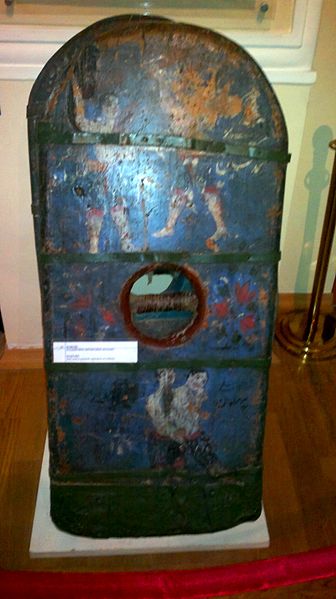
Bargirs - kettlebells of Zorkhana. Middle Ages. Museum of History of Azerbaijan. - Description:
Both seniors and youth can take part in the competition in various weight categories, individually or in teams. Each team consists of 10 members:
- From 5 to 7 athletes,
- One “Master of Ceremonies”, who among others hits the gong,
- One trainer,
- One team captain.
In case when the team consists of more than 5 athletes, 0,1% of the 6th and 7th member’s score is going to be added to the final score of the team.
Individual competition consist of seven disciplines:
- Sang gereftan,
- Kabbadeh,
- Meel Bazy,
- Charkhidan Whirling: Charkz Teez – Charkz Charmani Charkh tak fer,
- Shelang takhteh
- Professional Meel giri.
Apart from the aforementioned disciplines, there are also wrestling competition being organized in four different weight categories( 60-70kg, 70-80kg, 80-90kg and >90kg).
To calculate total score gained by each team, the following rules are used:Place
Team competion
Individual competition
Wrestling
Team with 7 members
Team with 6 members
Team with 5 members
Sang gereftan, Kabbadeh, Meel giri, Charkh Teez - Charkh Chamani, Meel Bazy
60-70 kg, 70-80 kg, 80-90 kg, >90 kg
1.
70
7x1060
6x1050
5x1010 points for each discipline
10 points for each weight category
2.
63
7x954
6x945
5x99 points for each discipline
9 points for each weight category
3.
56
7x848
6x840
5x88 points for each discipline
8 points for each weight category
4.
49
7x742
6x735
5x77 points for each discipline
7 points for each weight category
5.
42
7x636
6x630
5x66 points for each discipline
6 points for each weight category
6.
35
7x530
6x525
5x55 points for each discipline
5 points for each weight category
7.
28
7x424
6x420
5x44 points for each discipline
4 points for each weight category
8.
21
7x318
6x315
5x33 points for each discipline
3 points for each weight category
9.
14
7x212
6x210
5x22 points for each discipline
2 points for each weight category
10.
7
7x16
6x15
5x11 point for each discipline
1 point for each weight category
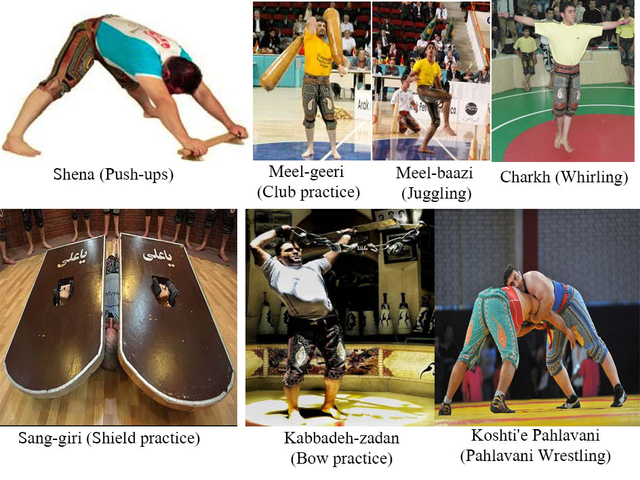
Zurkhaneh equipments and terms in Iranian Varzesh-e-Bastani (source: http://www.irantourcenter.com/zurkhaneh-iran-traditional-sport/) :
1- Varzesh-e-Bastani (ancient sport): Is a comprehensive physical exercise session of 60 to 90 minutes, consisting of different kinds of physical activities appropriate for the age groups of 16 to 60-70 years old. These exercises were practiced under special customs and rituals established over hundreds of years. Each session of Varzesh-e-Bastani comprises: Warming up, main body of physical exercises, and warming down.
2- Zurkhaneh (home of strength): Is the very specially designed physical Structure, entangling, a myriad of philosophical, religious, cultural and educational Bases, together with the necessary technical facilities and apparatus for the cultivation of the body and the excellence of mind. The entrance door is low so that body of any walk of life at the time of entrance must of necessity bow in respect and enters this sacred place.
3- Bastanikar: Is everybody who practices Varzesh-e-Bastani and possesses a number of outstanding physical and spiritual traits and characteristics.
4- Pahlevan: Is the first champion among other bastanikars of a village, city, Province, country or the world of the time. This title was awarded only to athletes who were recognized as having had reached perfection in the qualities of both physical Prowess and moral virtue. The significance of Pahlevanship has been well resented in the Farsi language literature and culture. As an example, Ferdowsi, in his outstanding poetic book (Shahnameh), pictures Rostam, the Persian legendary Pahlevan, fighting heroically against depravity, vice, and sinful deeds and thoughts in the purest and most literary forms in the tenth century. Pahlevanship exists in daily life of the Zurkhaneh athletes, the most recognized tradition, Golrizan, happens when someone has a financial problem. In such a case after the Morshed bell the ring (Zang) anybody who wants to help, put the money in the special pot during this traditional charity ceremony.
In each Varzesh-e-Bastani session, the Morshed accompanies all the exercises with chanting the epics and poems that describe the braveries and heavenly prowess and heroism of these Pahlevans for the good of the human beings.
5- Gowd: Is the most significant facility where all the activities of the Varzesh-e-Bastani are performed. The floor of the pit is constructed with different layers of, from bottom to top, crushed tumble weeds, a thinner cushion of dried fine straw, a thicker layer of coal ash and finally, a well packed layer of clay or argil in a way to assure softness and flexibility needed for the safety of the Bastanikars during their physical activities. The Khadem (janitor) of the Zurkhaneh makes regularly sure that this floor is sufficiently well packed and humid before the start of every session. To eliminate the detrimental effects of dust and humidity, especially in an indoor and relatively small space such as the Zurkhaneh, the methods of construction of Gowd’s floor are rapidly approaching the ones used in constructing the other sport activities areas like the contemporary running or playing fields.
6- Morshed: Is an experienced Bastanikars who, at the same time, is a well-educated man who also has some talents in music. He is especially competent in providing the different rhythms that are needed for directing the various exercises of a Varzesh-e-Bastani practice session. He does this job by chanting the epic poems and couplets and by playing the Zarb and Zang that he has at hand. Some times there are two Morsheds who in harmony with each other direct the practice session.
7- Zarb: Is a large hemispheric wooden drum, with a skin of deer, stretched over the larger end of it. Zarb is used to give the Indispensable rhythm and cadence for all the exercises through-out the session.
8- Zang: Zang is a bell that hangs within reach of Morshed’s hand. Morshed will play the Zang for purposes such as signal the beginning or the end of an exercise, attract the attention for making an announcement, honor the presence of a Pahlevan, guest, or a social personality and communicate with the Miandar and the other athletes who are performing in the Gowd.
9- Miandar: Miandar performs at the central part of the Gowd. He is the key person and leader of session.
10- Pishkesvat: Is a Bastanikar, who is characterized by a high degree of expertise, experience and seniority. He also assumes the responsibility of teaching the techniques of Varzesh-e-Bastani to younger Bastanikars.
12- Nocheh or Nokhasteh: Is a beginner (novice) in Varzesh-e-Bastani. He is ordinarily under the direction and the apprenticeship of a Pishkesvat. This is the lowest rank in the hierarchy of Varzesh-e-Bastani. The highest rank in Zurkhaneh is Saheb-e Taj (owner of the crown). It is noticeable that the one who is the first to start each one of the individual exercises is the Nocheh who is at the bottom line in seniority. The last athlete who will finish the exercise bout in the individual events is the Miandar.
13- Sar-Dam: Sar means “place” and Dam refers to “speaking or chanting”. From the technical standpoint, this is the Morshed’s rostrum from where he leads the practice session by his chants, Zarb and Zang.
14- Takhteh-Shena: Is a plank that is used for the different types of push up exercises particular to this traditional sport.
15- Meel: Is a big chunk of hard and heavy wood related with the idea of using it somewhat like Indian clubs, however, it differs with them in a number of ways. First, its base is the largest part of it. Second, it is considerably longer, larger and heavier. Third, Meels are used primarily for weight training. Fourth, one pair of Meels is necessary for exercise in Varzesh-e-Bastani. Fifth, the handle of the Meel is a cylindrical piece of hard wood that is fixed very firmly on the top of the Meel.
16- Kabbadeh: Is a bow shaped iron instrument used for weight training in Varzeshe-Bastani. On this instrument in Zoorkhaneh, the string has been replaced by a heavy chain which generally is made of 16 links. In each link there are approximately six metallic discs, each one measuring about the size of a small saucer. Kabbadehs weigh mostly between 11 to 50kg. This weight can be adjusted to athlete’s ability by removing or adding chain links or discs.
17- Sang: Is a huge rectangular piece of hard wood that has some similarities with the ancient shields used to ward off blows or missiles. The side of the rectangular that is moved near the floor throughout the exercise is gently arched. There is a hole at the central part of each Sang with a bar across it that is used as a hand grip around this opening is covered by a soft material to protect the hand. Sangs are used for weight training and one pair of them is necessary for the exercise.
18- Shelang-Takhteh: Is a plank of hard wood. This equipment is used for stretching exercises, muscular endurance and agility of the legs, aimed at running speed and endurance. This is a heavy exercise and 40 to 50 repetitions are considered to be a high performance in this event.
19- Shalvar-e-Bastani: Is a knee-breeches pantaloon that is typical clothing for the Bastanikars. This clothing is made of either leader or of heavy embroidered cloth decorated with elaborate designs and scenes. The firmness and resistance of this kind of trousers make it possible for the athletes to use it as a dependable grip during traditional wrestling of Varzesh-e-Bastani.
20- Kamarband: Is a large and heavy leader belt made especially for Shalvar-e-Bastani. This belt provides a more dependable grip for wrestling specific to Varzesh-e-Bastani.
21- Koshti (Wrestling): Similar to the Sang and the Kabbadeh exercises, Koshti is an individual event that is performed in the Gowd only by a few Bastanicars who are scheduled for the exercise session. The type of Koshti that is performed in Zoorkhaneh looks much like the Greek style wrestling where only the upper body of the wrestler gets involved in the technical pinning and holds of the combat.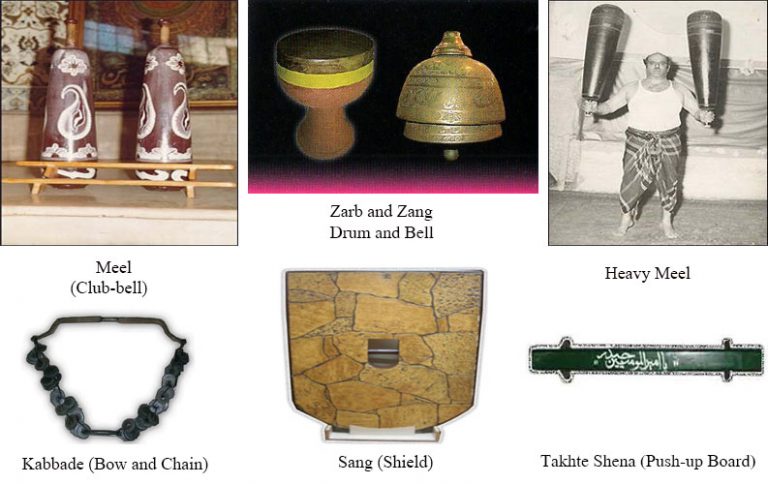
- Current status:
The sport is still being practised. International Zurkhaneh Sports Federation (IZSF), connecting 22 countries involved in the sport, spreads the knowledge of Zurkhaneh. It publishes the rules and broadcasts recent events. Apart from frequent trainings and unofficial games, the official competition (World championships, Europe championships, Asia championships, World Cup and many others) organized by federation, is being held every few months. Apart from the aforementioned competitions, there are also one held for senior, junior or disabled contestants.
In recent years, Zurkhaneh is becoming more and more popular in countries neighbouring Iran, especially in Iraq or Afghanistan. The huge tournament took place in May 2017 in Baku within the framework of 4th Islamic Solidarity Games. Iran won the team competition category. - Contacts:
International Zurkhaneh Sports Federation (IZSF)
No 8, Sepidar St, Africa Ave, Tehran, I.R.IRAN Postal Code: 1518943865
Tel :+98-21-88203115
Fax :+98-21-88203314
Webside: http://www.izsf.net/en
Youtube: https://www.youtube.com/channel/UCUrMQ4_CvTHJBt4Hv_SsRAw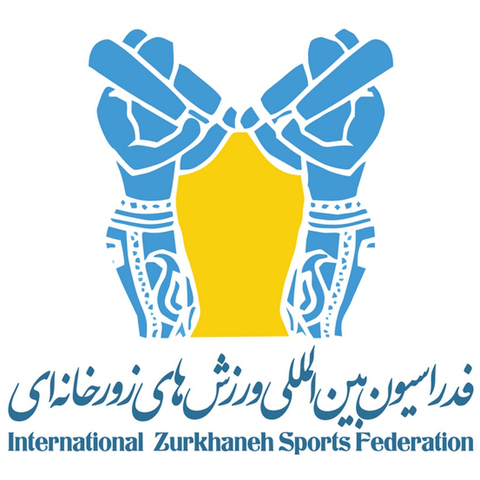
Asian Zurkhaneh Sports Confederation (AZSC)
Tel : +82 51 245 5600
FAX : +82 51 245 5700
E-mail :This email address is being protected from spambots. You need JavaScript enabled to view it. ;This email address is being protected from spambots. You need JavaScript enabled to view it.
Webside: http://www.azsc.asia/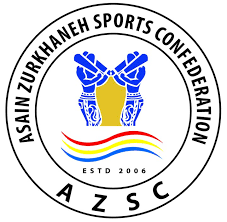
Nepal Zurkhaneh Sport Association
Webside: https://nepalzurkhaneh.wordpress.com/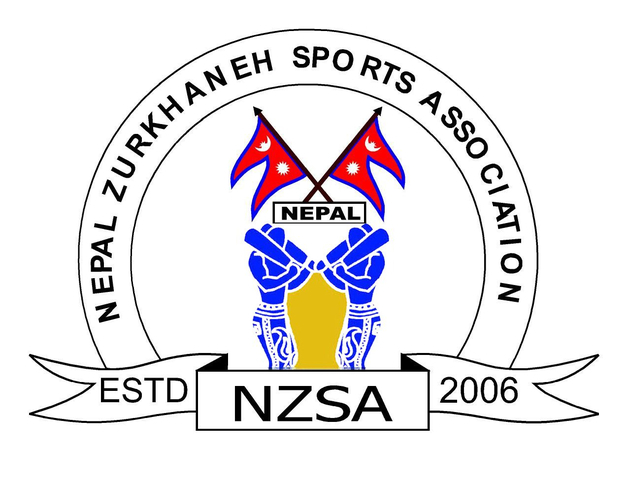
Baltic Zurkhaneh Sports Federation
Webside: http://www.zurkhaneh.lt/en/about-zurkhaneh/the-music-of-zurkhaneh.html
Email:This email address is being protected from spambots. You need JavaScript enabled to view it. 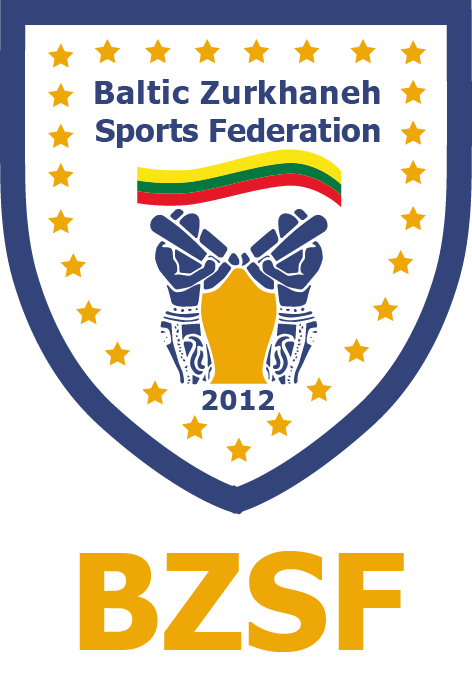
Portugal Zurkhaneh Sports Association
Webside: https://portugalzurkhaneh.wordpress.com/rule-regulation/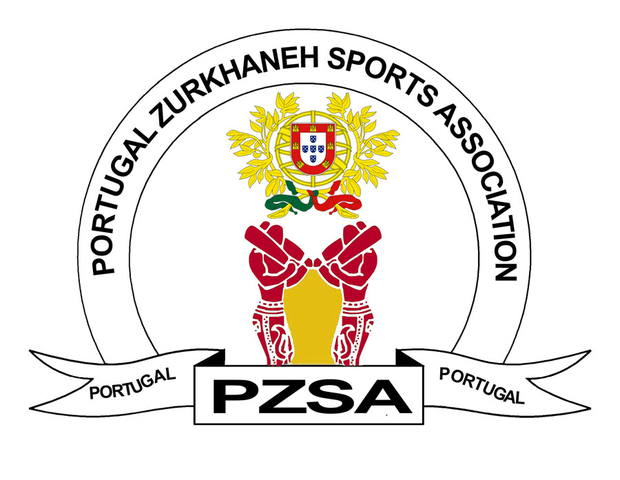
Uganda Zurkhanes Sports Association
Webside: https://smoothcomp.com/es/club/19576
Zurkhaneh Sri Lanka
https://www.facebook.com/Zurkhaneh-Sri-Lanka-765392690271302/Kenya Zurkhaneh Sports Federation
https://www.facebook.com/Kenya-Zurkhaneh-Sports-Federation-1486167324999333/?eid=ARA4vgxTfXwuo1iab2ldMEQV8D-H6XahWwkMQxERrh5NvUlHlvqJafDnajeobp2woWll5S_xewvNsaebZurkhaneh Ferdousi München e.V. - https://www.facebook.com/zurkhaneh/?eid=ARAsGt7ZwjM94cH5X5P5PZKVUCJEaZIKszb8zHJ1MZYFKwD0mvs1jU1zA_J5UxS_aZ3bm3IXHlCWZcnU
- Sources of information :
Books:
Abbās Kamandi, Varzeš wa sargoḏadšt-e varzeš-e bāstāni-e Kordestān, Sanandaj, 1984
Abassi, Mehdi, Tarikh-e Koshtigari dar Iran (The History of Wrestling in Iran). Tehran 1984
Amirtash, A.M., Zoorkhaneh and Varzesh-E-Bastani. Journal of Movement Sciences and Sports, 2008, 5(1), 59–73
Amirtash, A.M., Varzesh-e-Bastani and Zoorkhaneh. Eugene, OR: University of Oregon, Microfish Publication, 1980
Angelo Piemontese, Il capitolo sui pahlavān delle Badāyiʿ al-Waqāyiʿ di Vāsfi, AIUON, N.S. 16, 1966, pp. 207-20
Ayria, J., M.S. Thesis: A study of the Persian gymnasium, Zoorkhaneh. C.A. San Joseh, San Joseh State University, 1975
Babayan, S., Zoorkhaneh. Tehran, Iran: Milli, Inc., 1958
Bahar, M., Iranian Mythology. Tehran, Iran, Foundation of Iranian Culture, 1973
Bank Melli, Activity in the Zoorkhaneh, Tehran, Iran: Author, 1971
Bayza’i's, Partaw, Thrtkh-i varzish-i biastint-yi Irirn: Zuikhimnah. Tehran, 1958
Beazaie Kashani, P., Iranian ancient sport, Zoorkhaneh. Tehran, Iran: Heidari, 1958
Behmanesh, A., History: wrestling and myth in Iran. Olympic Review, 307, 209-211, 1993
Devlin Daneshforouz, The History and Traditions of The Zurkhaneh - https://medium.com/@dforouznv/house-of-strength-the-history-and-traditions-of-the-zurkhaneh-4c41c58d569a
Dosabhai, F. K., History of the Parsis, including their manners, customs, religion and Present position, London, Britain: Macmillian and co., 1884
Ensafpour, G., The culture and the history of the Zoorkhaneh and social groups of its Members, Tehran, Iran: Ministry of Art and Culture, The Anthropological Center of Iran, 1974
Ensafpour, Gholamreza. History and Culture of Zoorkhaneh. Tehran: Anthropology Research Essay Collection: Survey and Study on Zoorkhanes of Tehran. Anthropology Research Center, 1975
Farzad Nekoogar, Traditional Iranian Martial Arts (Varzesh-e Pahlavani), Menlo Park, 1996 (http://www.pahlavani.com/)
R. A. Galunov, “Zurkhana: atletchyeskaya arena persii (Zur-ḵāna: The athletic arena of Persia),” Iran (Leningrad) 1, 1926, pp. 87-110
Gaspard Drouville, Voyage en Persependant les années 1812 et 813, 2 vols., Paris, 1819-20; tr. Manučehr Eʿtemād Moqaddam as Safar dar Irān, Tehran, 1985. Ṣadr-al-Din Elāhi, “Negāh-i digar ba sonnat-i kohan: zur-ḵāna,” Irān-šenāsi/Iranshenasi6/4, 1995, pp. 726-45
Givi, M., Zoor-Khaneh: The traditional athletic club, Unpublished Master’s thesis. Colorado, Universiy of Colorado, 1978
Ḡolām-Reżā Enṣāfpur, Tāriḵ o farhang-e zur-ḵāna wa goruhhā-ye ejtemāʿi-e zur-ḵāna, Tehran, 1974
Ḥasan Guša, Varzeš-e bāstāni dar Irān, Payām-e now 3/6, Farvardin 1326/March-April 1947, pp. 47-55
Higher Council of Culture and Art, Tehran Zoorkhanehs: A cultural and and social study, Tehran, Iran: Author, 1976
Ḥosayn Partow Bayżāʾi Kāšāni, Tāriḵ-e varzeš-e bāstāni-e Irān: zur-ḵāna, Tehran, 1958, new ed., Tehran, 2003
Hossein Parto Beizai, Tarikh-e Varzesh-e Bastani (Zoorkhaneh), Tehran 1967
Hosseini, A., R.H. Bastani and H. Sairafi, The first International Tarikhname-ye Varzesh, Iran Zamin, Olympic National Committee press, Iran. Tehran. Iran, 2007
Houchang E. Chehabi, “Jews and Sport in Modern Iran,” in Homa Sarshar and Houman Sarshar, eds., The History of Contemporary Iranian Jews IV, Beverly Hills, 2001
Ilahi, S., Nigahi digar bih sunnati kuhan: zurkhanah, iranshiniast 6, 731-738, 1994
Iraj Bahiri, Zurkhaneh, 2003 (http://www.angelfire.com/rnb/bashiri/zurkhaneh/zurkhaneh.html)
Jaʿfar Šahri, Šakar-e talḵ, Tehran, 1968
Jacob Eduard Polak, Persien: das Land und seine Bewohner, Hildesheim, 1976; tr. Keykāvus Jahāndārī as Safar-nāma-ye Pūlāk (Īrān wa īrānīān), Tehran, 1982
Jamil Ṭāʿi, al-Zurḵānāt al- baḡdādiya, Baghdad, 1986
Kashani, J., The ethics of the sacred pit, Tehran, Iran. Iran Tribune press 1974
Kāẓem Kāẓemayni, “Zur-ḵāna,” Honar o mardom, N.S., nos. 56-57, 1967, pp. 55-62
Kazemayni, K. and S.S. Babayan, Zoorkhaneh: Iranian Ancient Athletic Exercise. Printed in Iran by Kayhan Printing House, Tehran 1964
Kazimayni, K., Zoorkhaneh or Gymnasium, Tehran, Iran: Melli, Inc, 1963
Kiani, M.G. and Faraji, H., Zoorkhaneh: Historic Training in Iranian Culture. World Applied Sciences Journal, 14(9), 1415–1423, 2011
Klaus Kreiser, Edirne im 17. Jahrhundert nach Evliyā Çelebī: Ein Beitrag zur Kenntnis der osmanischen Stadt, Freiburg, 1975
Luijendijk, D.H., Zoor Khane, Ancient Martial Art of Iran , Boulder, US, 2006
Luijendijk, D. H., The Zurkhaneh in Shiraz, Iran and the Caucasus, 15(1-2), 99–116, 2011
Mahdi ʿAbbāsi, Tāriḵ-e košti-e Irān, 2 vols., Tehran, 1995
Malcolms, J., The history of Persia, Tehran, Iran: Matbouat, 1948
Mehrdad Bahar, Sociology of Zoorkhanes of Tehran. Anthropology Research Center, 1997
Mehrdād Bahār, “Varzeš-e bāstāni-e Irān wa rišahā-ye tāriḵi-e ān,” Čistā 1, October 1981, pp. 140-59; republ. as “Āʾin-e Mehr, zur-ḵāna, ʿayyāri, wa Samak-e ʿAyyār,” in Moḥammad-Mahdi Moʾaḏḏen Jāmeʿi, ed., Adab-e pahlavāni. pp. 323-42
Mohammad-Ghorban Kiani and Hassan Faraji, Zoorkhaneh: Historic Training in Iranian Culture, World Applied Sciences Journal 14 (9): 1415-1423, 2011
Moḥammad-Mahdi Tehrānči, Pažuheš-i dar varzešhā-ye zur-ḵānaʾi, Tehran, 1985
Moṣṭafā Ṣadiq “Gowd-e moqaddas: peydāyeš-e zur-ḵāna,” Honar o mardom, N.S. no. 145, 1974, pp. 55-62
Noṣrat-Allāh Ṣamimi, “Varzeš,” Irān-e bāstān 2, no. 29, 3 Šahrivar 1313/25 August 1934
Patricia L. Baker, “Wrestling at the Victoria and Albert Museum,” Iran 35, 1997
Philippe Rochard, “Le ‘sport antique’ des zurkhâne de Téhéran: formes et significations d’une pratique contemporaine,” unpubl. Ph.D. diss., Université Aix-Marseille I, 2000
Profile of Iran, Zoorkhaneh, Tehran, Iran:Ministry of Art and Culture: Author, 1977
A. Reza Arasteh, “The Social Role of the Zurkhana (House of Strength) in Iranian Urban Communities during the Nineteenth Century,” Der Islam 36, February 1961, pp. 256- 59
Ridgeon, L., The Zurkhana between tradition and change. Iran, 45(2007), 243–265, 2007
Rochard, P., The identities of the Iranian Zūrkhanah. Iranian Studies, Volume 35, Issue 4, 313-340, 2002
Zahary T, Smith, More than One Way to Measure: Masculinity in the Zurkaneh of Safavid Iran, The Willtop Review, Volume 8, Issue 2, Spring 2016Articles:
Zurkhaneh - http://www.irantourcenter.com/zurkhaneh-iran-traditional-sport/?fbclid=IwAR2CSO55EOPiqXVAHgn6y6H3tecFSV7HCGQ6VaSfYDclMdPe61oqm_p4VuQ
Zurkhaneh (article in Polish) - http://www.osmol.pl/2013/05/zurxane-tradycyjny-iranski-sport/
Pahlevani and Zoorkhaneh Rituals – https://www.tasteiran.net/stories/9/pahlevani-and-zoorkhaneh-rituals
Introducing Iranian Zoorkhaneh and Pahlevani traditions - http://www.soltourism.com/destinations/show/introducing-iranian-zoorkhaneh-and-pahlevani-traditions
ZUR-ḴĀNA, Encyclopaedia Iranica - http://www.iranicaonline.org/articles/zur-kana
Pahlevani and zoorkhaneh rituals - https://wikimili.com/en/Pahlevani_and_zoorkhaneh_ritualsVideos:
https://www.youtube.com/watch?v=3ZOt13_ic5w
https://www.youtube.com/watch?v=cH2DIOtHEqU
https://www.youtube.com/watch?v=3ZOt13_ic5w&feature=share&fbclid=IwAR0W3e56sNtPvqW4-ipOwPRBdPZmnRLg5z_yqmpl8Jwz-WiwNbdgctPMj9c - Gallery:
- Documents:
 Pahlevani_and_Zoorkhanei_rituals_as_ancient_Iranian_sport.pdf
Pahlevani_and_Zoorkhanei_rituals_as_ancient_Iranian_sport.pdf Zoorkhaneh_and_Varzesh-E-Bastani.pdf
Zoorkhaneh_and_Varzesh-E-Bastani.pdf

